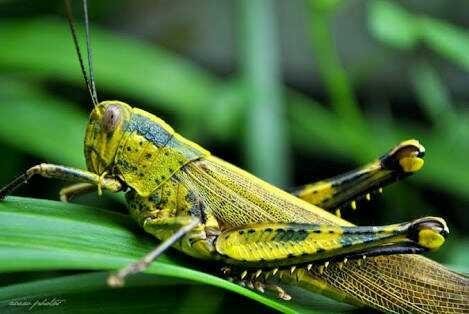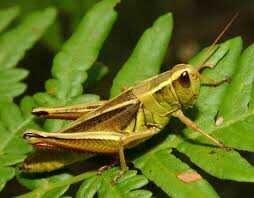Interesting Facts About Grasshopper
Grasshopper is a herbivorian insect subordo Caelifera in OrdoOrthoptera. This insect has an antenna that is almost always shorter than its body and also has a shortovipositor. The sound generated by some grasshopper species is usually produced by rubbing the rear femur against the front or abdominal wings (called stridulation), or by flapping its wings while flying. The rear femur is generally long and strong which is suitable for jumping.
These insects are generally winged, although their wings are sometimes unavailable to fly. The female locusts are generally larger than the male mantis.

In Islamic Religion, Grasshopper is one of the two animals that when it first dies is still permitted to eat.
What is Baby Food Grasshopper?
Grasshoppers hatch from eggs, like all insects and through different stages before they are big. The grasshopper is commonly called nymphs and begins life with a very small form of light green. You can distinguish the infested grasshoppers and adult grasshoppers from their size, and from their wings. When they have just hatched, they can not go too far and eat whatever crops are nearby. They prefer plants that are easily digested like grass or fresh shoots. As baby grasshoppers grow larger they duck a process called molting, where they change their old skin and appear bigger and stronger. Their jaws grow also dandiusia that grasshoppers start eating harder plants.

What is Adult Grasshopper food?
When the baby grasshoppers turn into adults and can fly they will chew whatever is nearby. His favorite foods are the plants in the family of grasses such as corn, rice, and others. They are not picky and can also eat different kinds of other plants. Grasshoppers can even digest dry food thanks to the special chemicals in their stomach and saliva that can help break down the carbohydrates they will use for energy. The mantle is one of the few animals that can change appearance in responding to environmental pressures such as overpopulation. Normally grasshoppers are solitary creatures and try to avoid one another. The hungry grasshoppers can form a multitude of millions of locusts, travel hundreds or thousands of miles and leverage whatever they pass. In Africa they are known as pests that destroy plants that can lead to starvation